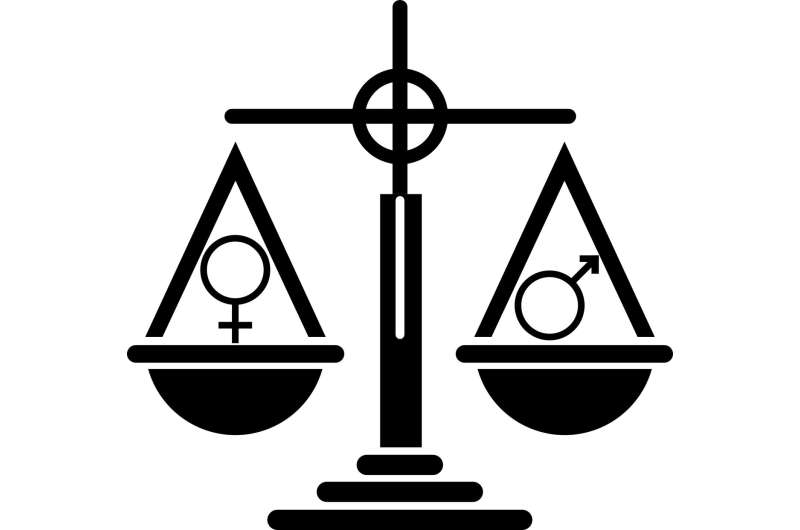Investigating gender equity: Researchers analyze gender distribution of institutional leadership roles

To accelerate gender parity in the field of wilderness medicine, in which women are significantly underrepresented, a team of researchers analyzed the gender distribution of key leadership roles at the Wilderness Medical Society (WMS) and among authors and reviewers of content published in WMS's official journal, Wilderness & Environmental Medicine (WEM). Their findings, which document past and current gender gaps, are reported in two related studies available in the current issue of WEM, published by Elsevier.
"While gender parity in science is not a new topic, the growing emphasis on diversity and inclusion that has led many well-established academic societies and journals in science and medicine to turn their focus inward and self-examine the ways existing practices may perpetuate gender gaps inspired us to create a 'gender report card' for academic wilderness medicine," explained Sarah M. Schlein, MD, Larner College of Medicine, University of Vermont, Burlington, VT, U.S., one of the lead investigators. "Wilderness medicine historically has had a small portion of women in leadership and publishing roles, but despite the gender gap getting smaller, we still have important work to do. Our intent was to report the existing data, both past and current state, as an objective starting point for subsequent steps."
"The numbers tell the story. Our findings show that fewer women than men publish, are invited to peer review, present their research, and serve in the leadership of WEM and the WMS. By drawing attention to the underrepresentation of women in wilderness medicine research and publishing, we hope to speed up the pace of change," said Linda E. Keyes, MD, Department of Emergency Medicine, University of Colorado, Aurora, CO, U.S., one of the lead investigators.
One study focused on the journal's authors, peer reviewers, and editorial board members, and showed that while women make up about a third of WMS membership (28%), in the period from 2010-2019, they represented only:
- 22% of journal authors and 19% of first authors. These percentages varied from year to year but did not markedly change over time.
- 20% of WEM peer reviewers—who received only 18% of WEM invitations to review.
- 16% of editorial board members since the journal's inception (20% of the current board).
- 13%-16% of mainstage conference presenters even through women were 31% of conference presenters and 27% of WMS member conference attendees.
"What we found in WEM is very similar to what is observed in publishing in many specialties, including emergency medicine and family medicine, the two specialties most commonly represented by WMS members," said Dr. Keyes.
The other investigation was conducted to assess gender equity at the society through leadership, recognition, and speaking opportunities. According to Dr. Schlein, "The gender distribution documented for WMS as a whole is similar to that seen at WEM. Neither reflects the gender distribution of women in medicine or those who participate in wilderness activities."
"The greatest underrepresentation is at the higher leadership levels, which unfortunately reinforces the status quo," commented Dr. Schlein. Women comprised only 10% of board presidents, 18% of recognition awards, and 20% of mainstage presenters were women. There has never been a female WEM Editor-In-Chief.
Opportunities for the editorial board, reviewing, and publishing on the journal side create a positive feedback loop to promotions, leadership, speaking expertise, and opportunities within the society, and vice versa. The benefits of gender diversity in science and medicine are well documented. Improved gender balance in leadership can establish norms for women early in their careers by means of role modeling and mentorship, which can have an important influence on career guidance, research productivity, and society contributions. Adding more women should not be at the exclusion of men—opportunities can be created for all.
"Gender equity is not a zero sum game. Women make up more than half the population, and I would propose that as long as women are less than 50% in any category, we are missing out on potential talent and key contributions in any field. Ideally, the path forward includes people of all genders working together to ensure access and belonging for anyone inspired by the field of wilderness medicine. Efforts to improve diversity and inclusion will have a positive impact not only on members who are women, but will strengthen the organization as a whole," Dr. Schlein added.
Dr. Keyes noted that societies and journals that have been successful in gender parity have set firm deadlines and have called into question commonly held assumptions and excuses to achieving equity. For example, in some publications, the adoption of double-blind peer review has led to greater publication of female authors.
"Now that we have a gender report card, we can no longer fall back on vague statements to gloss over gender gaps. It is up to us, at all levels from membership to the highest leadership, to identify goals and strategies, consider new policies and programs, and hold ourselves accountable," Dr. Keyes commented.
The investigators performed retrospective reviews on the gender breakdown all articles published in WEM from 2010-2019, peer reviewer names from the WEM Editorial Manager database, a single-day 2020 membership snapshot, conference attendees 2012 through 2020, conference presenters from winter 2017 through winter 2021, and leadership and awards data from 1984 through 2021. The software Genderize.io was used primarily to generate probability-based binary gender categorizations (male/female) based on first names or pronoun associations.
More information: Linda E. Keyes et al, Gender Distribution Associated With the Journal Wilderness & Environmental Medicine, Wilderness & Environmental Medicine (2022). DOI: 10.1016/j.wem.2022.04.005
Sarah M. Schlein et al, Gender Equity in Membership, Leadership, and Award Recognition in the Wilderness Medical Society, Wilderness & Environmental Medicine (2022). DOI: 10.1016/j.wem.2022.04.006
Provided by Elsevier





















